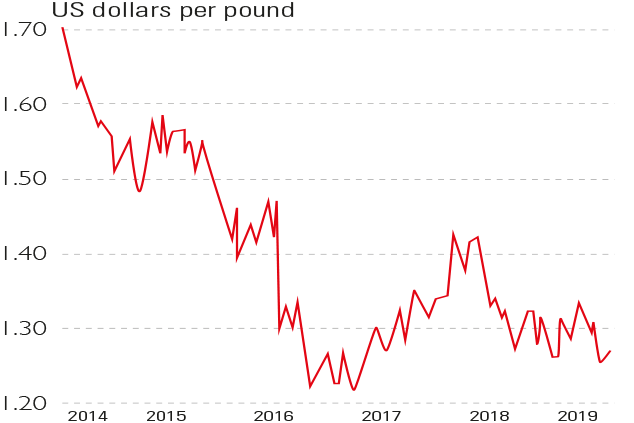
Sterling slipped to a two-year low against the greenback this week; it remains around 12% below its pre-referendum level. A strong labour market report should have provided support, but the good economic news was eclipsed by the growing possibility of a no-deal Brexit after both Jeremy Hunt and Boris Johnson said they wanted to ditch the Irish backstop.
A general election and a Corbyn government could follow Brexit, which is another key reason the pound is weak. The decline in the pound should really have started to close our external deficit by now, says David Smith in The Sunday Times. Yet the trade deficit in goods widened in the year to May, and the overall current-account shortfall climbed to 5.6% of GDP in the first quarter.
Viewpoint
“The 2020 election [is a risk to the macro and market outlook]… while the President remains wildly popular among his base, his approval rating is a dismal 40%. And this is coming off the peak of the economic expansion, and stockmarket, and the low in the unemployment rate. Meanwhile, the only reason we have such a wide field of Democratic candidates is because they each smell a huge opportunity. Yet [most] are left-of-centre and the only centrist is seen as too old… if you are a US business today [you see] Democrats threatening to roll back at least some of the corporate tax cuts. So what do you do? Wait and see… which means cash gets built up on the balance sheet instead of being deployed into the real economy. The surge in the NFIB ‘uncertainty’ index in June and commensurate pullback in… expansion plans spoke volumes.”
David Rosenberg, Gluskin Sheff